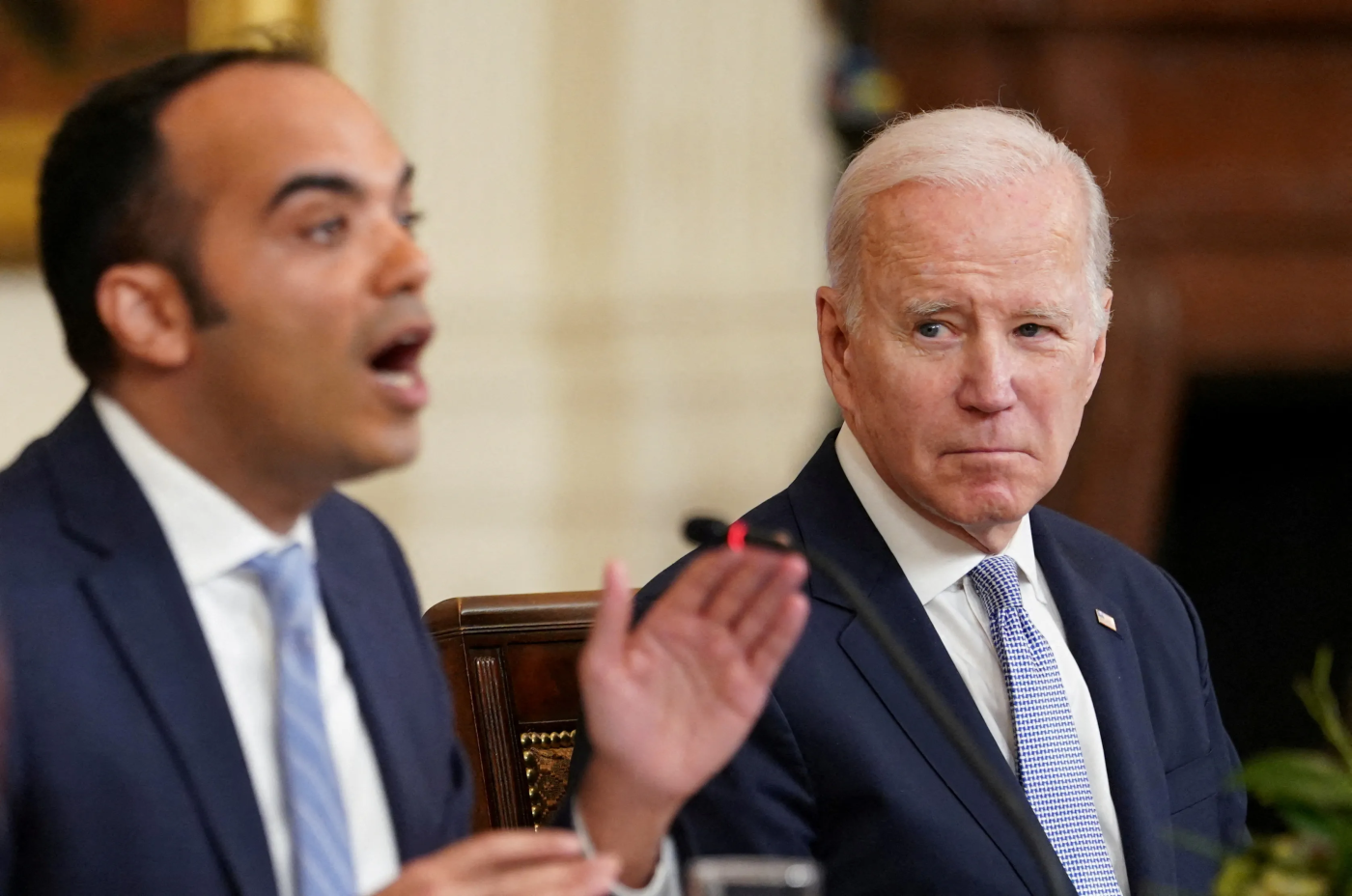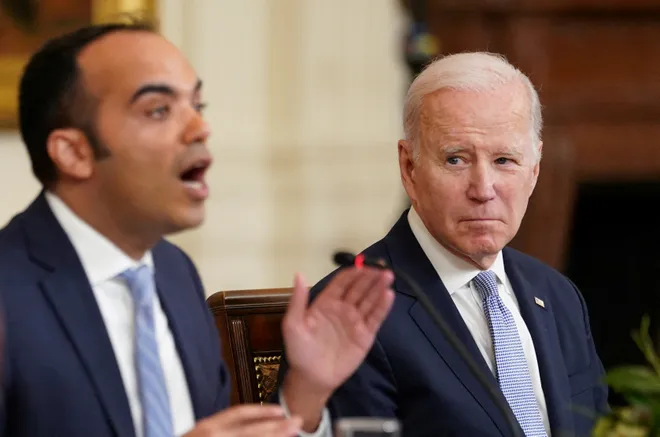
Consumers could see a $5 overdraft fee in 2025 under a final rule — or maybe, not
Big banks and credit unions that dominate the financial landscape would only be able to charge $5 for overdraft fees or face much tighter restrictions under a final rule by regulators.
Under the Consumer Financial Protection Bureau rule announced Thursday, big institutions would be required to slash their overdraft fees from $25 or $35 in many cases. The CFPB said $5 is the estimated level at which most banks could cover costs associated with administering a courtesy overdraft program.
The $5 is a bit higher than the $3 benchmark fee that had been discussed earlier by the CFPB and some consumer advocates.
An overdraft fee is what a bank or credit union charges you when you don't have enough money in your account to cover a transaction. The bank might allow the transaction to go through anyway, but you'd often pay a fee and you need to make up the shortfall. Multiple purchases can create even more trouble and trigger multiple fees in some cases.
About 23 million households pay overdraft fees in any given year, according to the Consumer Financial Protection Bureau.
Capitalize on high interest rates: Best current CD rates

The overdraft final rule — which would cover about 175 of largest banks and credit unions in the country — would take effect Oct. 1, 2025. The agency’s final rule on overdraft fees applies to the banks and credit unions with more than $10 billion in assets that dominate the U.S. market.
Banks are likely to try to stop the restrictions
Banks, though, are expected to continue to push back against the restrictions and might have some success because the Senate, the House and the White House will be controlled by Republicans in 2025.
President Joe Biden in a statement in January called overdraft fees "exorbitant."
"Banks call it a service — I call it exploitation," Biden said then.
But we're in the final days of the Biden administration, and many consumer advocates expect weaker consumer safeguards and less regulation under the Trump administration.
In remarks made in May before the U.S. Senate Committee on Banking, Housing, and Urban Affairs, the American Bankers Association said Congress should pass a resolution under the Congressional Review Act to invalidate the overdraft rule if the CFPB finalized the proposal.
What final rule says on overdraft fees
Banks would have some options if they didn't charge a maximum $5 overdraft fee under the final rule. But these options might not be attractive to banks, either.
Banks could choose to opt to set their own fee at a "break even" point or the amount that actually covers just their costs and losses. Using this approach likely would involve more recordkeeping and proof of the bank's expenses.
Or the CFPB said banks and credit unions would be able to continue to extend "profit-generating overdraft loans if they comply with longstanding lending laws, including disclosing any applicable interest rate." Under this option, the CFPB said, consumers would have a choice to open the line of overdraft credit. The bank, according to the CFPB, would provide account-opening disclosures that would allow comparison shopping, send periodic statements, and give consumers a choice of whether to pay automatically or manually. Again, more paperwork would be involved.
The CFPB, which initially proposed a crackdown on such fees in January, maintains that banks are charging excessive overdraft fees by exploiting a loophole that exempts overdraft lending services from longstanding provisions of the Truth in Lending Act and other consumer financial protection laws.
The CFPB estimated that the final rule could save consumers up to $5 billion in annual fees, or $225 per household that pays overdraft fees.
CFPB Director Rohit Chopra said in a statement that the crackdown is designed to require "big banks to come clean about the interest rate they're charging on overdraft loans."
So far, consumers have already seen some relief. Many large banks voluntarily reduced or eliminated overdraft fees in recent years under pressure from lawmakers and regulators. In 2022, for example, Bank of America reduced its overdraft fees from $35 to $10.
The CFPB noted consumers have saved $6 billion annually in these fees after its initiative to curb "junk fees" drove many banks to reduce or eliminate overdraft and nonsufficient fund fees — the fee a bank might charge declining a payment or cashing a check when there isn't enough money in an account.
"However, even with these changes, consumers still paid more than $5.8 billion in 2023 in reported overdraft and NSF fees," the CFPB stated.
More:Comerica Bank faces lawsuit, accused of illegal fees, harming Direct Express cardholders
More:'Selling fast' or just a sales tactic? The truth about online alerts fueling impulse buys
After the CFPB announced its proposed rule in January, banks argued that the regulator was wrongly trying to place overdraft fees under the Truth in Lending Act. Some argued that the restrictions could lead banks to limit access to overdraft protection and limit the availability of low-cost bank accounts.
On Thursday, Rob Nichols, the president and CEO of the American Bankers Association, issued a statement that was highly critical of the CFPB's move to finalize what he dubbed a "misguided rule" and called out the CFPB director for his willingness to have the agency "exceed its Congressionally mandated guardrails."
"The bureau has no legal authority to subject overdraft services offered by any financial institution to Regulation Z, much less implement a price cap on overdraft protection," Nichols said. "We will closely review the final rule with our members and consider all options going forward. It should not be allowed to go into effect.”
Lindsey Johnson, president and CEO of the Consumer Bankers Association, issued a statement Thursday that called the CFPB's action a "blatant overreach of its statutory authority."
Johnson said the CFPB's rule jeopardizes access to overdraft services, which are a lifeline for 1 in 5 Americans who lack access to credit. Should banks limit overdraft services, she argued, many consumers could be left with worse alternatives, such as payday loans and pawn shops.
The CFPB, Johnson said, is not taking into account several steps banks have taken to deliver savings in the past decade, such as putting into place daily limits on the number of overdraft fees, overdraft cushions and grace periods.
Many consumer groups — including the National Consumer Law Center — strongly supported the proposed rule as a way to provide consumers with financial relief. Some argued that banks engaged in practices that gouged consumers, caused overdraft fees to snowball, discouraged some people from keeping money in a bank and caused others to see their bank accounts closed.
Consumer advocates say banks found a way to turn simple everyday mistakes into big revenue streams.
The CFPB said in January that many times institutions charge $35 for an overdraft loan, even though the majority of consumers’ debit card overdrafts are for less than $26 and are repaid within three days.
On Thursday, the National Association of Consumer Advocates said the new rule could face the threat of reversal if Congress uses a law, the Congressional Review Act, which allows Congress to overturn rules using expedited procedures, including limited debate and a simple majority vote.
“The only way that this rule can live up to its promises to put money back into families’ pockets is if members of Congress support this important economic action for their constituents and simply let the rule go into effect,” said Christine Hines, senior policy director at the National Association of Consumer Advocates.
The average overdraft fee
The average overdraft fee was $27.08 at big banks, according to a survey released by Bankrate.com in August. That's up 1.7% from an average $26.61 for an overdraft fee in the 2023 survey.
Detroit has some of the lowest overdraft fees in a 25 metro area survey with an average fee of $24.50, according to the Bankrate.com survey. The highest average by metro area was $32.70 in Philadelphia. The lowest was the Washington, D.C., area with an average of $19.63 for overdraft fees.
Bankrate conducted the survey among a total of 10 banks and thrifts in each of 25 large U.S. markets. The average overdraft fee peaked at $33.58 in 2021, according to Bankrate data.
Bankrate.com experts suggest that some of the best ways to avoid overdraft fees include: Monitoring your available account balance, not just the balance in the account but the amount available for immediate withdrawal, before initiating transactions. Do not opt-in to overdraft protection on small-dollar ATM and debit card transactions. Consider declining overdraft protection, if the fees are too high and you have more in savings. Link your checking account and savings account so any shortfall is covered by your own money.
(This story was updated to add a video and more information.)
Contact personal finance columnist Susan Tompor: [email protected]. Follow her on X (Twitter) @tompor.

